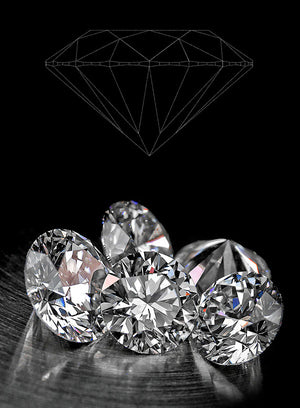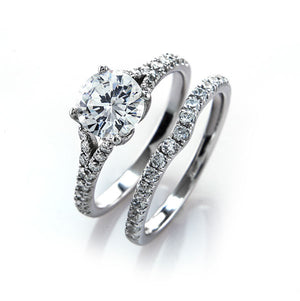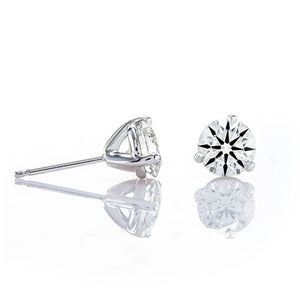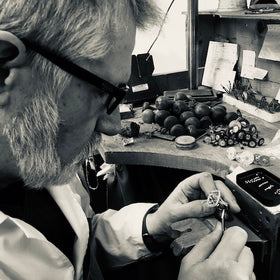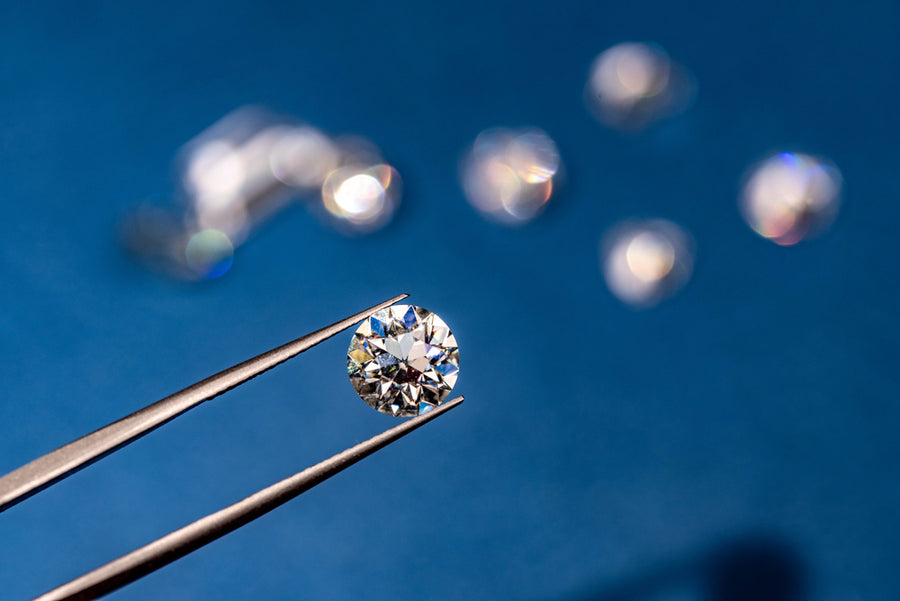
Lab Grown Diamond vs Moissanite: Understanding the Differences
Lab-grown diamonds are common in bracelets, earrings, rings, necklaces, and other kinds of custom jewelry. However, there are also many diamond simulants, including moissanite, that prove to be a beautiful choice.
Both lab diamonds and moissanite are popular choices for jewelry buyers. Although they might look similar at first glance, lab-grown diamonds and moissanite have defining differences.
In our guide, we discuss what lab diamonds and moissanite are, how they are created, and the differences between the two stones.
What is a Lab Diamond?
Lab-grown diamonds are created in a controlled, laboratory setting rather than forming naturally in nature. However, these lab diamonds have the same composition, crystal structure, and physical properties as natural diamonds.
Lab diamonds are very similar to natural diamonds and can be cut and set in the same way for jewelry. They are graded on the same diamond grading scale and have similar optical properties.
What is Moissanite?
Moissanite is also created in a laboratory setting, but these stones aren’t the same as lab diamonds. Moissanite is a naturally occurring mineral composed of silicon carbide. There are similarities between the two gemstones, such as a high refractive index, brilliance, and durability.
These similarities make moissanite a common alternative for lab-grown diamonds and are generally lower in price compared to diamonds.
While moissanite can be created and found naturally, it can also be human-made. In fact, most jewelry with moissanite features moissanite grown in a lab. They have the sparkle and brilliance of diamonds at a more affordable price. This has made them popular among jewelry buyers.
What are the Differences Between Lab Diamond vs. Moissanite?
While there are similarities between lab diamonds and moissanite, these are ultimately two very different gemstones.
Here are some key differences to keep in mind when shopping for jewelry:
Moissanite Has a Higher Refractive Index
Lab-grown diamonds and moissanite both have a sparkle factor and make brilliant pieces of jewelry.
However, moissanite has a higher refractive index. This refers to the measure of a gemstone’s ability to bend light. A higher refractive index means the moissanite emits more noticeable flashes of rainbow-colored light. While some jewelry buyers might like the rainbow flashes of moissanite, it could also look like a flashing disco ball, especially in the sunlight.
Lab Diamonds are More Durable Than Moissanite
Moissanite gemstones have a hardness of 9.25 on the Mohs scale—this measures a mineral’s hardness based on its scratch resistance relative to other minerals on the scale.
On the other hand, lab-created diamonds measure ten on the Mohs scale, which is the highest rating. Ultimately, this means you’re less likely to scratch and damage your lab-grown diamond jewelry than moissanite jewelry.
Moissanite is Cheaper Than Lab Diamonds
With lab-grown diamonds being real diamonds, they’re more expensive than moissanite jewelry. Lab diamonds go through an extensive process to ensure they are cut, polished, and graded based on their attributes. Since moissanite doesn’t have to go through this process, they are more accessible and a more budget-friendly option.
Lab Diamonds Come in More Colors Than Moissanite
Moissanite stones come in a few different colors:
- Colorless
- Blue
- Green
- Yellow
Along with the colors listed above, lab-grown diamonds can also come in pink and yellow. You tend to have more customization options when buying jewelry made with lab diamonds.
Lab-Grown Diamonds Have Different Production Methods
Lab-grow diamonds are created in two ways:
HPHT: In the high temperature, high pressure (HPHT) method, you place a small diamond seed in a press. The diamond seed undergoes high temperatures and pressure in the press to replicate the process necessary for diamonds to form. Carbon is dissolved into the diamond seed, which allows the seed to grow into a larger diamond.
CVD: In the chemical vapor deposition (CVD) method, you place a thin slice of a diamond seed into a vacuum chamber and introduce it to a mixture of gases that typically contain carbon. The gases are oxidized or activated, causing the carbon atoms to form layers around the seed.
Creating Moissanite with Lely
Moissanite is created using a process called Lely, during which a silicon carbide seed crystal is heated at a high temperature until it turns into gas. The decomposed gasses rise to the surface of the seed crystal and the layers form a larger crystal. Once the seed crystal reaches its desired size and cools, you can remove it from the furnace and cut it into different shapes.
Lab Diamonds Have More White Light Reflections
Moissanite has higher dispersion than lab-created diamonds. This means it disperses light into its spectral colors to a greater extent. It results in distinct color reflections in different lights. Lab diamonds reflect more of a white or grey color rather than a fiery rainbow.
Shop for a Brian Gavin Diamonds Lab-Grown Diamond
Now that you know the differences between lab diamonds and moissanite, you can make a more informed choice about the stone you want for your jewelry. While moissanite can look very pretty and have a fiery rainbow sparkle, while lab diamonds sparkle white and grey.
Lab-grown diamonds from Brian Gavin Lab have unparalleled brilliance and sparkle. We offer quality lab grown diamonds using both HPHT and CVD methods to help you find what you love.
The CVD material we use is grown in a unique process that grows the material in a single cycle. It improves the diamond’s transparency and offers a better colorless brightness. We carefully polish each diamond to Brian Gavin’s exacting specifications for maximum light performance.
Each diamond is carefully assessed to ensure they meet our high expectations for clarity, carat weight, color, cut shape, as well as cut/performance—our extra C for diamond grading that sets us apart from other jewelers.
This extra C we use for grading lab diamonds isn’t the only thing that sets us apart. At Brian Gavin Diamonds, we also believe it is our responsibility to provide our clients with the best sparkle factor available.
That’s why we’ve spent the past two years researching the various methods of growing lab-created diamonds. Now, put our research to work for you while you shop our collection of lab-grown diamonds, including those set in tennis bracelets, necklaces, and engagement rings.





